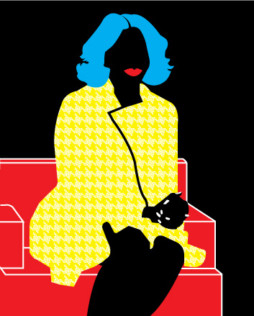
In 2016, I photographed the writer Diamond Sharp sitting in the grass in a park in Brooklyn. I asked her to close her eyes, take a deep breath and turn her face to the sun. The photograph illuminated a woman in stillness, surrounded by overgrown plants.
Black people are often photographed in cold, concrete settings in cities, as if that is the only environment we inhabit. This portrait was part of a series I shot of young artists of colour, set in lush urban parks, that was meant to challenge that narrative.
A professor who critiqued my photographs said the images were not charged-up enough. Perhaps she expected the images to say something overtly political. I continue to think about the implications of that comment and the need for blackness to be presented in protest. It is reductive to think that blackness, as it is represented in art, should be only symbolic.
That’s why the selection of Kehinde Wiley and Amy Sherald to paint the portraits of Barack and Michelle Obama for the Smithsonian National Portrait Gallery signals something very important. Wiley, who will be painting Obama, is highly regarded for his vibrant portraits — predominantly of men he meets through street casting — that evoke European old master paintings. Wiley adapts a historical style of portraiture that was rarely used to celebrate black people, and presents them, in all of their everyday glory, in grand and opulent colours. His paintings are jolting because they imagine a new way of historicising and visualising black people.
But the selection of Sherald for Michelle’s portrait is perhaps more significant. It elevates a different kind of nuance in black portraiture, one that is even rarer: Sherald paints blackness that is quiet, ordinary and individual. What is so startling about her work is that in their subtle poses and at times muted colour palette, the subjects are simply people.
Sherald’s portraits typically feature a single black person who looks directly at the viewer. Her subjects are not positioned in remarkable poses. In one painting, a young girl stands with her arms dangling. In another, a girl blocks the sun from her eyes.
Interior lives
The black people in Sherald’s portraits go fishing, cradle their children and bring balloons to a birthday party. Visualisations of blackness are almost always imbued with political meaning, but Sherald presents the interior lives of her figures without editorialising about them.
Still, there is something confrontational about how Sherald’s subjects are almost always facing head-on, evaluating the viewer from the canvas. The paintings demand that the viewers see the humanity on display. The subjects are real people, and they see us looking at them. It is impossible to look away.
It is this clarity of vision, and conception of grace, that makes Sherald an incredible choice of portrait artist for the former first lady.
Any official portrait of either of the Obamas would be ripe for artistic analysis. Their lives and accomplishments are bold, powerful and symbolic; it is hard not to imagine them outside of what they represent. But the Obamas are not simply public figures or canvases for the aspirations, emotions and projections of the American public.
Michelle, in Sherald’s artistic hands, will be honoured with a particularly high standard of representation: As an individual black woman — a spectacular one — who deserves to be seen as such.
It’s a reminder that black artists need not present their work as representative of all black experience. Blackness is always nuanced. It is always personal.
— New York Times News Service
Naima Green is a Brooklyn based artist, photographer and educator.









